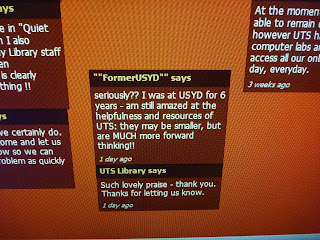I, ROBOT
A cyborg: “a flesh-and-blood human enhanced with tiny embedded computers, a man-machine hybrid with billions of microscopic nanobots coursing through his bloodstream” (Pg 1).
This is Ray Kurzweil’s dream, and his belief of the future. That humans and machines will morph together to create a new super-species. He calls this time ‘The Singularity,’ a time where technology will be so far advanced that robots will come to be superior to humans. Such a time is feared by most, but Kurzweil is excited, and is looking after his body carefully so when the day comes, he’s be able to live forever in silicon.
How does this related to cultural institutions? Of course, everything is related! This predicted convergence of human and machine will change everything. It is hard to anticipate the changes which may be made in the future by such technological advances, but there are two possible general outcomes. Either cultural institutions will advance with technology, or it will be dominated by it and disappear (or transform into something new). The latter, more pessimistic of the two, is the view of the future we had adopted for our wiki and podcast. We envisioned a thousand years from now everything is online, is electronic, is somewhat second hand.
This morbid prediction comes from the what Kurzweil calls “‘the law of accelerating returns,’ which holds that technology does not advance in a linear fashion but rather at an exponential rate” (Pg 4). While this may not be a vision of how we exactly see the future, it is definitely a possible one. What it depends upon is the development of ‘machine ethics’, not only in how intelligent machines act with and towards humans, but in how humans use and act towards machines.
LYONS, D. 2009. I, Robot. Newsweek, 153.
Why The Future Doesn’t Need Us
Bill Joy
Joy has a similar vision of the future as what is projected in the podcast. That what we know as humanity will end, and cultural institutions along with it. (Will super intelligent robots want/need/understand cultural institutions? Will they even have culture?). It is impossible to guess how such robots may behave, and so is impossible to predict such a future where humans are subservient to machines.
A very plausible future, Joy suggests, is one where humans become increasingly lazy, or dependent on machines, because it is no longer necessary to do any work themselves. While cultural institutions such as Universities and Libraries (or variants of these) may still exist, for their necessary in giving humans knowledge, it is possibly theatres and galleries will not because of this decrease human drive. Of course, what is being transmitted to us is that robots will make our lives so much easier and give us more free time to spend on the arts. It is impossible to make an accurate judgement, one can really only wait until it happen.
Joy explains Moravec’s view that humans are in grave danger of extinction at the hands of machines, and this is the future we imagined for our podcast. Speaking in the past tense, a robotic voice guides you (you, possible a robot) through the electronic site of cultural institutions. There is one institutions remaining, that being one which holds archives of all the now destroyed human institutions. The high rate of technological developments and convergence has squeezed them all out, pushing them all into one, tiny, stagnant space. The guide is not nostalgic about the past, rather viewing it as a novelty to show other robots.
In creating this dystopian future, “we [were] driven, instead, by our habits, our desires, our economic system, and our competitive need to know” (Pg 20). Such factors drive our cultural institutions. But do these also drive intelligent machines? Without a consciousness (though one might possibly be learned), would robots even think of taking power from humans? Again, questions without answers, only theoretical solutions. And what we have presented in our wiki and podcast is one of the worst possible imaginings (short of destroying the world), this future where robots dominate humans, where cultural institutions which make our society so rich are now gone.
While, at least, it is not the future I believe will occur, it is still a possibility and again, what is most important is ethics in ensuring that we do not go too far with technology and destroy ourselves. I would definitely disagree with Joy who sees that “the only realistic alternative I see is relinquishment: to limit development of the technologies that are too dangerous, by limiting our pursuit of certain kinds of knowledge” (Pg 20). I believe that we can push further forward, as long as we are mindful of what is important and worth protecting - and to me, most of all this means cultural institutions.
JOY, B. 2000. Why The Future Doesn't Need Us. Wired, 8.















